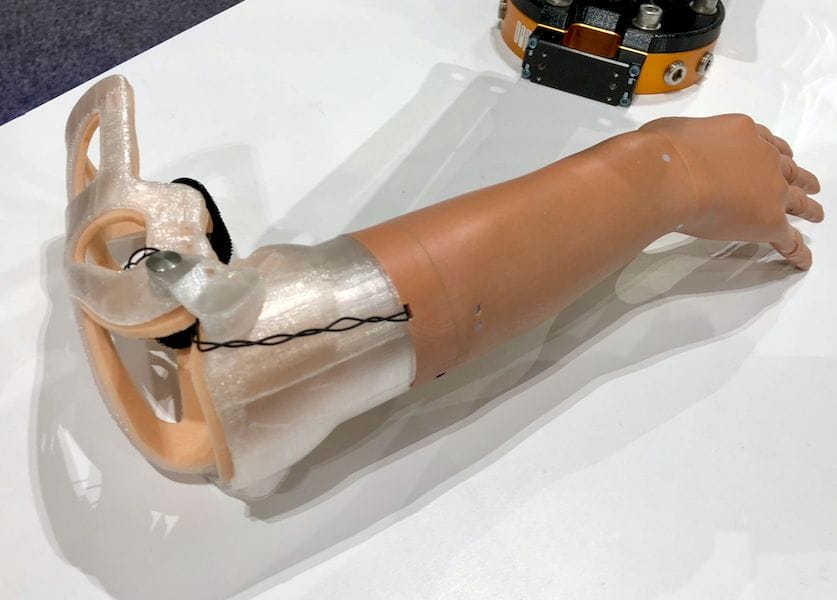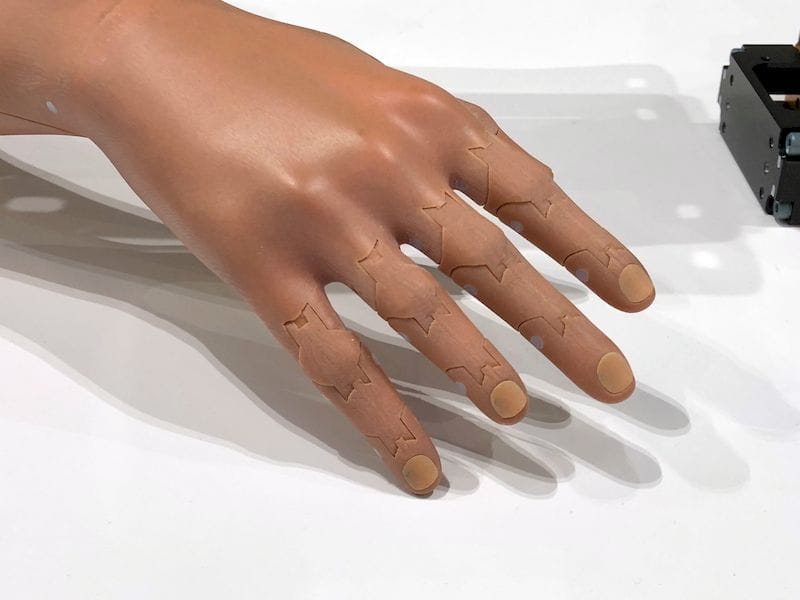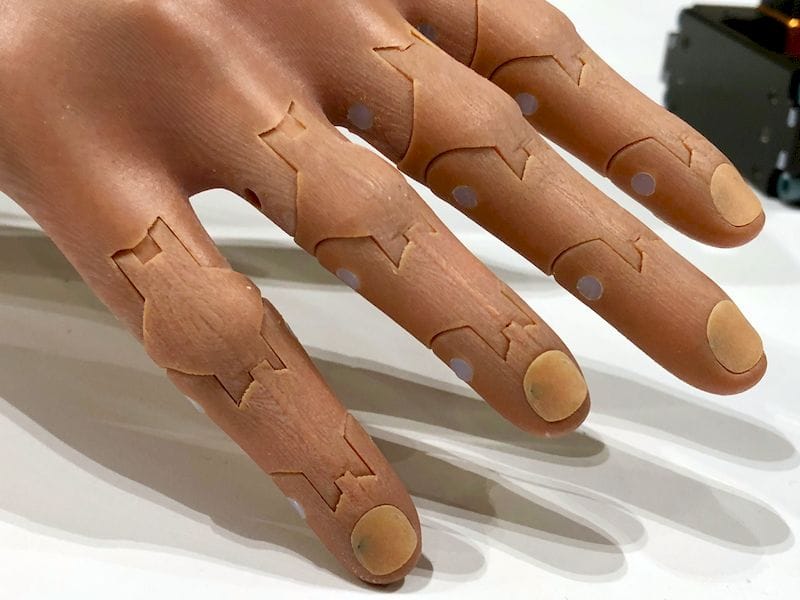
Stratasys announced a new partnership to help develop a fantastic 3D printed prosthetic, and it’s quite different from other ventures.
Prosthetics are perhaps one of the most perfect applications of 3D printing, particularly for children: the normally highly expensive replacement limbs are unaffordable by most, and particularly on a repeated basis as children outgrow the size of the device.
Some years ago it was realized it would be possible to 3D print very rudimentary replacement hands for children at very low cost. Then, when they were outgrown, you simply 3D printed another set at a slightly larger size.
This was tremendous news for child amputees, and also for 3D printer companies.
Why? It’s because the “goodness” of the concept enabled 3D printer companies to highlight their contribution to society by assisting the process.
As a result we were swamped with many near-identical announcements from multiple 3D printer companies, all essentially doing the same thing: helping child amputees gain access to rudimentary replacement hands. This effect translated into popular media, with these projects gaining some attention in major publications and news outlets. Good publicity, for sure, all while helping those in need.
But from our standpoint, it was no longer 3D print news; it became a very common application of the technology, and thus did not deserve reporting.
For some time we have not published stories on this topic for this reason.
But then we had a chat with this guy:

He’s Easton LaChappelle, the CEO of Unlimited Tomorrow, a 3D printed prosthetic startup, who have recently partnered with Stratasys. The young CEO has an interesting vision that pokes at a dimension of the prosthetic industry that I had not realized, one which is not addressed by other more rudimentary prosthetic ventures.
It turns out that there is a spectrum of device capability when it comes to prosthetics. At the lowest level, “static” prosthetics traditionally cost around USD$5K; Body actuated units run USD$10K-25K; Sophisticated MyoElectric units run USD$30K-80K; and ultra-sophisticated high-end units can be as much as USD$120K each.
And remember if you’re a child, parents may have buy several of these over the growth period.
The problem is that the existing 3D printed inexpensive solutions addressed only the lower ends of this spectrum. They are rudimentary devices only, although they are certainly better than nothing and eminently affordable.
But who’s working on the higher end part of that spectrum?
Unlimited Tomorrow, it seems.
They’ve developed a very sophisticated unit that does attempt to address at least the mid-level of the prosthetic spectrum, and at a much lower cost of USD$5K. That’s higher than the rudimentary solutions, but it provides much more function.

The Unlimited Tomorrow version includes a highly lifelike skin that’s 3D printed in a skin-tone that matches exactly the owner – through 3D scans of surviving limbs.
The unit also includes a variety of high-tech sensors and even includes haptic feedback. This is something you cannot do with simple 3D printed prosthetics. The surfaces are also style-able in various ways. You can, for example, paint the fingernails on this device if you so desire.

The software behind the arm’s control also includes neural network methods to learn the owner’s movements and improve them over time.
It’s also very easy to create, as it’s based on 3D scanning input that is fed into Unlimited Tomorrow’s software to design the custom prosthetic arm.
It seems to me that this project would open up the higher levels of prosthetic products to competition from 3D print-powered options. That’s a good thing for everyone who uses prosthetics.
And it could be a good thing for Stratasys too. They’re involved in a collaboration between Unlimited Tomorrow and Solidworks on the project. Stratasys is providing support for one year, specifically in 3D print services, to the tune of up to USD$100K.
I think this is a very good project for several reasons, including the obvious societal benefit. But for Stratasys, I think this approach could be an interesting way to explore new 3D printed applications at relatively low cost. I could imagine them targeting similar industries with such partnerships to explore the potential of growing their market. However, when I asked their representatives whether this type of investment is now a normal thing, they said now.
Which tells me this type of partnership itself is an experiment.
Via Stratasys and Unlimited Tomorrow

